- Stock Brushes
- Custom Brushes
- Brushes By Shape
- Brushes By Type
- Metal Channel Strip Brushes
- Flexible Strip Brushes
- Artist Brushes
- Staple Set Brushes
- Wire Drawn Brushes
- Conductive & Antistatic Brushes
- Anti Static Hand Held Brushes
- Anti Static Pencil Brushes
- Anti Static Strip Brushes
- Conductive Strip Brushes Brass
- Conductive Strip Brushes Thunderon
- Conductive Strip Brushes Conductive Nylon
- Conductive Hand Held Brushes
- Conductive Strip Brushes Stainless Steel
- Conductive Pencil Brushes
- Dissipative Brushes
- Dissipative Nylon Strip Brushes
- Dissipative Nylon Push Broom
- Insulative Strip Brushes
- Insulative Pencil Brushes
- Insulative Hand Held Brushes
- Titanium Brushes
- Twisted In Wire Brushes
- Epoxy Wound Brushes
- Step by Step Brush Design
- Common Uses
- Brush Holders
- Brush Info
- Design Sheets
- About Us
- Contact Us
Weather Brush Seals | Precision Brush
Door Seal Brushes
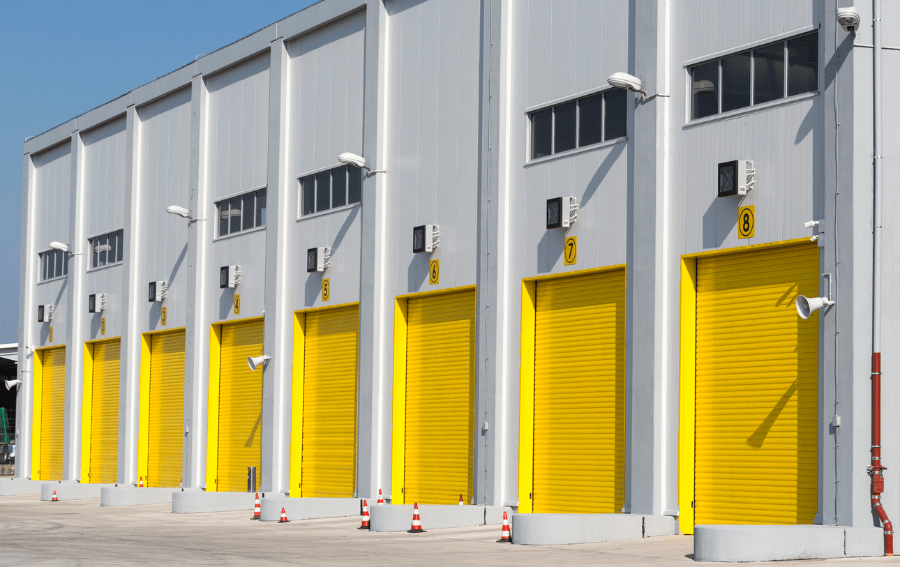 When a seal is needed around the edges of a door, door seal brushes provide an ideal solution. Some of the most common doors used with this brush application include:
When a seal is needed around the edges of a door, door seal brushes provide an ideal solution. Some of the most common doors used with this brush application include:
- Hand doors
- Overhead doors
- Sliding doors
- Rolling doors
- Commercial doors
- Glass doors
- Storefront doors
- Barn doors
- Aircraft doors
- Self-storage unit doors
Depending on the type of door they are installed for use with, door seal brushes can provide any or all of the following:
- Keep out pests such as birds and rodents
- Keep out dirt, dust, and debris
- Keep out weather such as wind, rain, and snow
- Maintain interior temperature control
- Maintain interior cleanliness
- Provide privacy and security
- Eliminate light leakage
If you’d like to speak with one of our custom brush experts about your door seal brush needs or ideas, please call our office. We’ve got just the brush for you or we will work with you to design your brush solution from concept to creation.
Contact Us Today!
OUR STOCK WEATHER BRUSH SEALS
Precision Brush's metal channel strip brushes are often used to provide an excellent weather seal for doors of all types and sizes. Stock options are listed below, but you can create your own custom weather seal in any length.
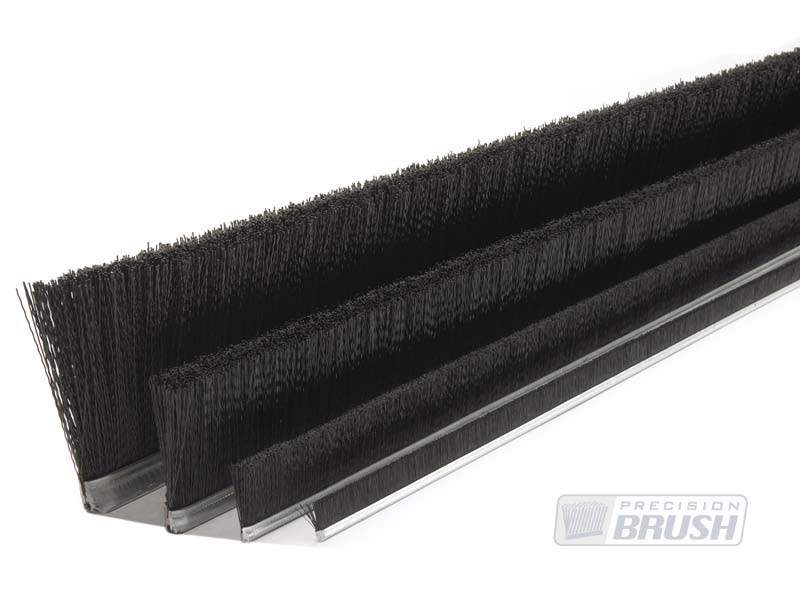
| Weather Seals #2.5 Galvanized Metal Channel (.125 x .125) | |||||||||
|---|---|---|---|---|---|---|---|---|---|
| Stock # | Length | Overall Trim | Fill Dia. | Color | Filling | Channel | Brush Holder PDF | ||
| SK23107 | 36 | X | 0.63 | 0.006 | Level | Black | Polypropylene | #2.5 Galv | Download |
| SK23108 | 36 | X | 0.88 | 0.006 | Level | Black | Polypropylene | #2.5 Galv | Download |
| SK23109 | 36 | X | 1.13 | 0.006 | Level | Black | Polypropylene | #2.5 Galv | Download |
| SK23110 | 36 | X | 1.63 | 0.006 | Level | Black | Polypropylene | #2.5 Galv | Download |
| SK23111 | 36 | X | 2.13 | 0.006 | Level | Black | Polypropylene | #2.5 Galv | Download |
| SK23112 | 72 | X | 0.63 | 0.006 | Level | Black | Polypropylene | #2.5 Galv | Download |
| SK23113 | 72 | X | 0.88 | 0.006 | Level | Black | Polypropylene | #2.5 Galv | Download |
| SK23114 | 72 | X | 1.13 | 0.006 | Level | Black | Polypropylene | #2.5 Galv | Download |
| SK23115 | 72 | X | 1.63 | 0.006 | Level | Black | Polypropylene | #2.5 Galv | Download |
| SK23116 | 72 | X | 2.13 | 0.006 | Level | Black | Polypropylene | #2.5 Galv | Download |
| Weather Seals #4 Galvanized Metal Channel (.187 x .187) | |||||||||
|---|---|---|---|---|---|---|---|---|---|
| Stock # | Length | Overall Trim | Fill Dia. | Color | Filling | Channel | Brush Holder PDF | ||
| SK23163 | 36 | X | 0.69 | 0.006 | Level | Black | Polypropylene | #4 Galv | Download |
| SK23164 | 36 | X | 0.94 | 0.006 | Level | Black | Polypropylene | #4 Galv | Download |
| SK23165 | 36 | X | 1.19 | 0.006 | Level | Black | Polypropylene | #4 Galv | Download |
| SK23166 | 36 | X | 1.69 | 0.006 | Level | Black | Polypropylene | #4 Galv | Download |
| SK23167 | 36 | X | 1.94 | 0.006 | Level | Black | Polypropylene | #4 Galv | Download |
| SK23168 | 36 | X | 2.19 | 0.006 | Level | Black | Polypropylene | #4 Galv | Download |
| SK23169 | 36 | X | 2.69 | 0.006 | Level | Black | Polypropylene | #4 Galv | Download |
| SK23170 | 36 | X | 3.19 | 0.010 | Crimped | Black | Polypropylene | #4 Galv | Download |
| SK23171 | 72 | X | 0.69 | 0.006 | Level | Black | Polypropylene | #4 Galv | Download |
| SK23172 | 72 | X | 0.94 | 0.006 | Level | Black | Polypropylene | #4 Galv | Download |
| SK23173 | 72 | X | 1.19 | 0.006 | Level | Black | Polypropylene | #4 Galv | Download |
| SK23174 | 72 | X | 1.69 | 0.006 | Level | Black | Polypropylene | #4 Galv | Download |
| SK23175 | 72 | X | 1.94 | 0.006 | Level | Black | Polypropylene | #4 Galv | Download |
| SK23176 | 72 | X | 2.19 | 0.006 | Level | Black | Polypropylene | #4 Galv | Download |
| SK23177 | 72 | X | 2.69 | 0.006 | Level | Black | Polypropylene | #4 Galv | Download |
| SK23178 | 72 | X | 3.19 | 0.010 | Crimped | Black | Polypropylene | #4 Galv | Download |
| Weather Seals #7G Galvanized Metal Channel (.312 x .312) | |||||||||
|---|---|---|---|---|---|---|---|---|---|
| Stock # | Length | Overall Trim | Fill Dia. | Color | Filling | Channel | Brush Holder PDF | ||
| SK23185 | 36 | X | 1.00 | 0.010 | Crimped | Black | Nylon | #7 Galv | Download |
| SK29815 | 36 | X | 1.50 | 0.010 | Crimped | Black | Nylon | #7 Galv | Download |
| SK23186 | 36 | X | 2.00 | 0.014 | Crimped | Black | Nylon | #7 Galv | Download |
| SK23187 | 36 | X | 3.00 | 0.014 | Crimped | Black | Nylon | #7 Galv | Download |
| SK23188 | 36 | X | 4.00 | 0.020 | Crimped | Black | Nylon | #7 Galv | Download |
| SK23189 | 36 | X | 6.00 | 0.020 | Crimped | Black | Nylon | #7 Galv | Download |
| SK23190 | 72 | X | 1.00 | 0.010 | Crimped | Black | Nylon | #7 Galv | Download |
| SK29814 | 72 | X | 1.50 | 0.010 | Crimped | Black | Nylon | #7 Galv | Download |
| SK23191 | 72 | X | 2.00 | 0.014 | Crimped | Black | Nylon | #7 Galv | Download |
| SK23192 | 72 | X | 3.00 | 0.014 | Crimped | Black | Nylon | #7 Galv | Download |
| SK23193 | 72 | X | 4.00 | 0.020 | Crimped | Black | Nylon | #7 Galv | Download |
| SK23194 | 72 | X | 6.00 | 0.020 | Crimped | Black | Nylon | #7 Galv | Download |
OUR CUSTOM WEATHER BRUSH SEALS
Precision Brush's metal channel strip brushes provide an excellent weather seal for all types of doors. Create your own custom weather seal today!
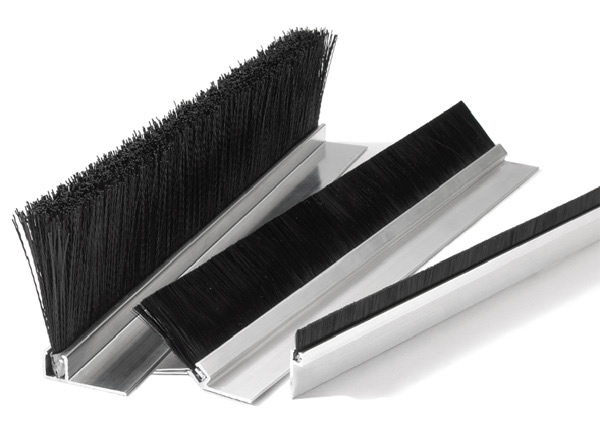
Precision Brush weather seals provide a quick return on investment in energy savings. They can be found everywhere from residential garage doors to large commercial overhead doors and even aircraft hangar doors. Precision Brush door seals are more effective than rubber or vinyl seals, as the independent filaments of the brush properly conform to irregular surfaces for a more complete seal.

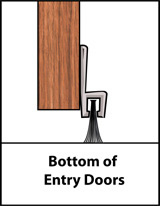
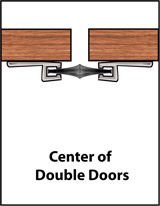
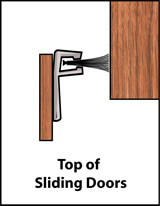
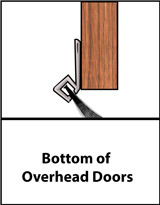
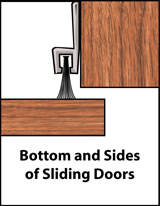
Weather Seals keep rain, wind, dust, sand, sleet, snow and debris out of your building. However, they are most commonly used to minimize drafts. Air infiltration and leakage is a problem in most buildings, especially around overhead doors and loading docks. Pedestrian doors and conveyors can also be problem points that can require Precision Brush weather seals. Not only can cooled or heated air escape, leading to unnecessary utility bills, but drafts can also cause uncomfortable working conditions.
Air leakage problems are also compounded by what is commonly known as the “chimney” or “stack “effect. Hot air rises and escapes through openings near the top of the building while cold air is drawn in through door gaps and openings near the bottom of the building. Depending on temperatures, air movement caused by the chimney effect can move up to 10 mph.
Precision Brush's strip brushes designed as weather seals can stop up to 99% of air infiltration and can be up to 3 times as effective as vinyl seals, as illustrated in this chart:
| Wind Speed | No Weather Seal | Vinyl Seal (Top & Sides) | Brush Seals (Top & Sides) |
|---|---|---|---|
| 15 mph | 6.24 cfm/ft2 | 0.30 cfm/ft2 | 0.10 cfm/ft2 |
| 25 mph | 13.10 cfm/ft2 | 0.64 cfm/ft2 | 0.21cfm/ft2 |
US Naval Brush Seal energy saving bulletin and installation diagram
All doors require a clearance gap in order to work properly. Unfortunately, this clearance gap also allows for air leakage and infiltration. Our strip brushes pay for themselves quickly by saving money on utility bills and also reduce environmental impact by requiring less energy to be produced.
Chart: Pedestrian door 3’ x 7’ with a 1/8” gap is equivalent to hole measuring 25.5” square inches. Overhead door 10’ x 10’ with a ¼” gap is equivalent to a hole measuring 90 square inches.






